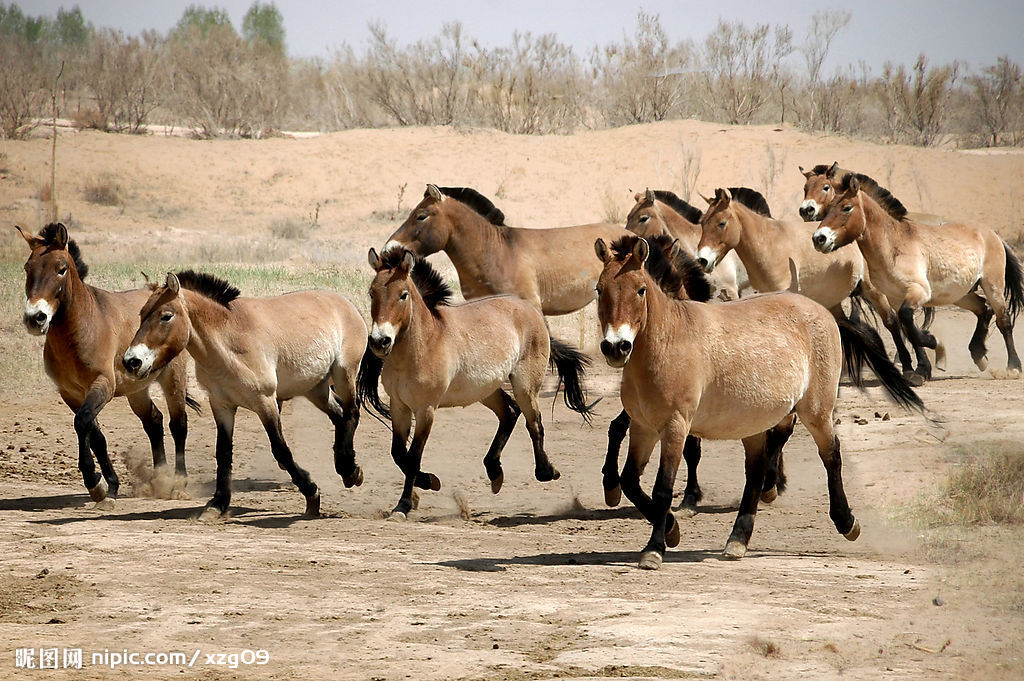The Basics of Equine Color Genetics
|
Introduction: When I began this site back in 2002 (after a debate on a racing forum as to whether the Kentucky Derby and Preakness winner War Emblem was black or brown (he's brown)), very little information on horse color and the genetics behind it was available on the internet. Though I created the site just to explain color in Thoroughbreds, it quickly evolved into a comprehensive color site. Our knowledge about color genetics has grown by leaps and bounds since then, and while this site began with a very simplistic format, it has been necessary to update it with more and more complex information. I hope it is still easy to understand for those who are new to the subject. If you are not already familiar with basic Mendelian inheritance, please read this wiki page for more information. An understanding of dominant, recessive, and incomplete dominant genes is very useful when reading this site.
With that in mind, the main point of this site has always been to provide a visual guide to horse color and some of the basic genetics behind it. I don't often have time to update this site, but as of 2/22/19, I am working on correcting some errors and sprucing things up a bit. (Yes, I know it's very web 1.0 looking, but who has the time?) So, without further ado, on to the basics! Chestnuts vary in shade from light golden red color to coppery red to dark liver. Some of the darkest liver chestnuts, often called "black chestnuts," are nearly indistinguishable from true black horses. Some chestnuts have flaxen manes and tails. |
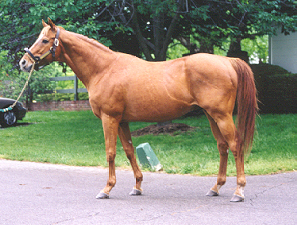 This is Affirmed, the 1978 Triple Crown winner, a light or golden chestnut. |
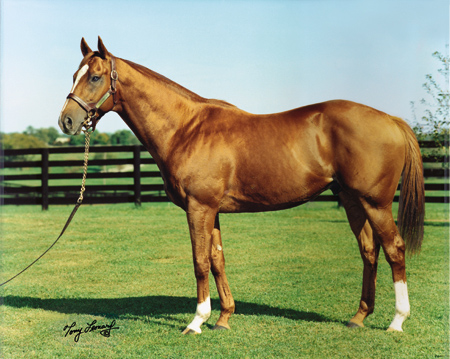 This is top TB sire Rahy, a slightly darker golden chestnut. |
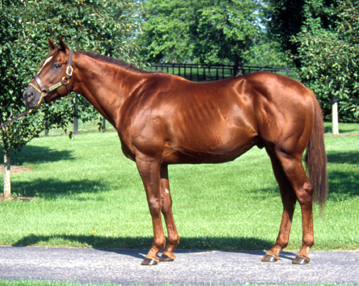 This is the South African champion racehorse Horse Chestnut, a red chestnut. |
 This is top TB sire Giant's Causeway, a liver chestnut. |
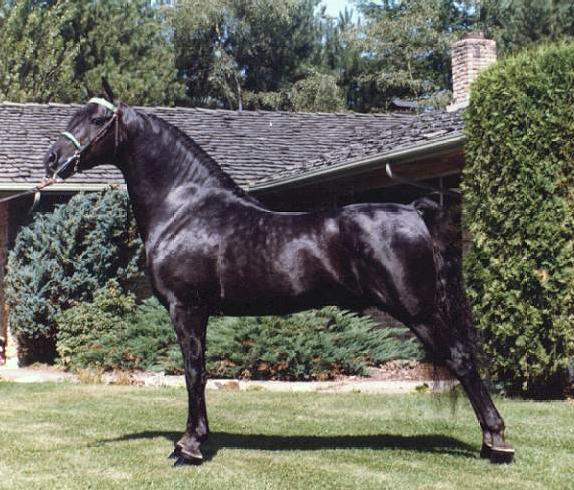 This is Merwin All A Breeze, a black chestnut (ee) Morgan. This shade is very rare. |
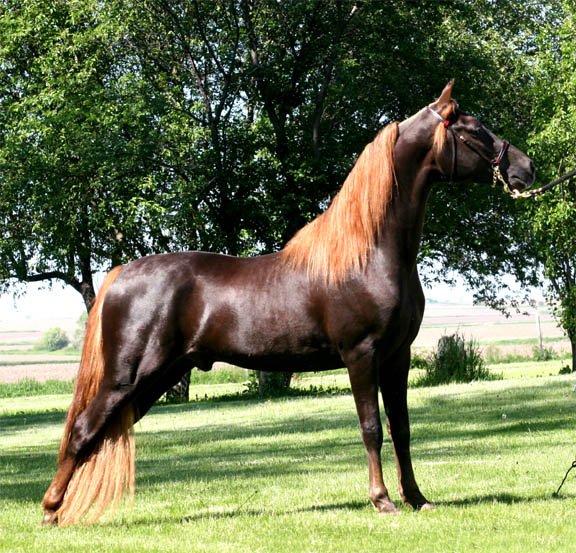 This is Kerry Top Hat, a flaxen black chestnut Morgan. |
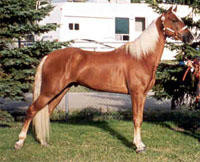 This is a flaxen light chestnut. |
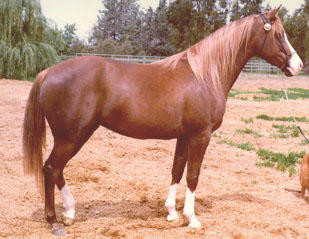 This is a flaxen liver chestnut. |
| Black horses can also vary in shade---from blue-black to dusty black to sun-faded black. Not all black horses fade in the sun, but those that do generally resemble brown, dark bay, or even liver chestnut horses. The ends of their manes and tails often fade to a burnt reddish shade. The genetic factor governing non-fading black vs fading black has not yet been discovered. |
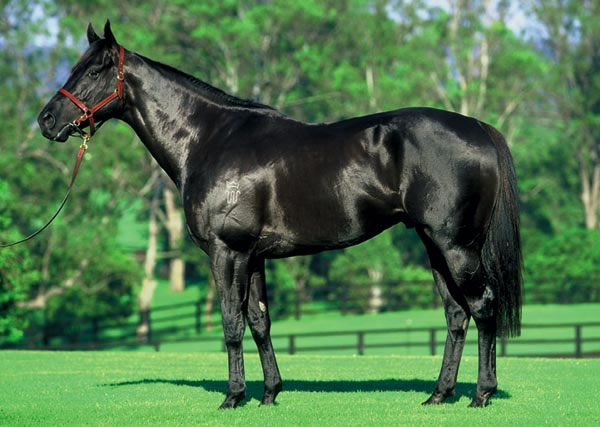 Australian superstar Lonhro, a true, non-fading black TB. |
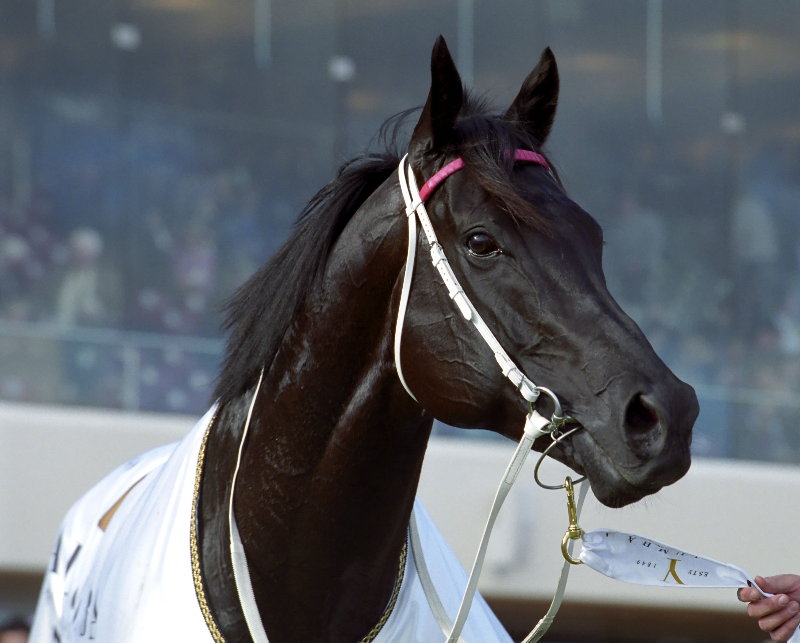 A true black like Lonhro will not show any brown hairs on the muzzle. |
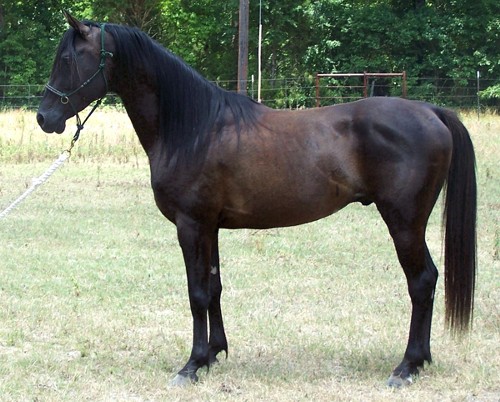 This is K-One, a fading black Arabian gelding bred by Deal Arabians. Note the lack of brown hairs on the muzzle. |
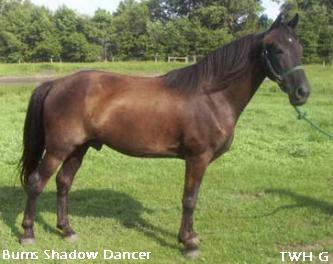 This is Burn's Shadow Dancer, a very faded black TWH gelding. As with the horse pictured at left, this horse also has no brown pigmented hairs on his muzzle despite the sun-fading. |
|
As discussed above, the alleles found at the Agouti locus control the expression of black pigment. They are as follows: A-agouti (meaning the horse is bay) and a-non agouti (meaning the horse remains black). (For quite some time, it was believed that more alleles existed, At (brown) and A+ (wild type bay), but this has now been debunked.) |
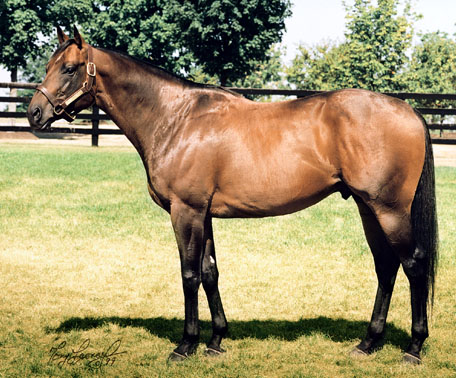 This is Touch Gold, a light bay TB. |
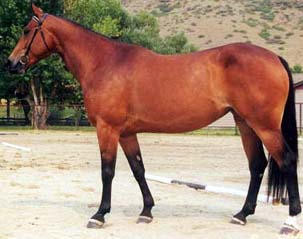 This is a red or blood bay. |
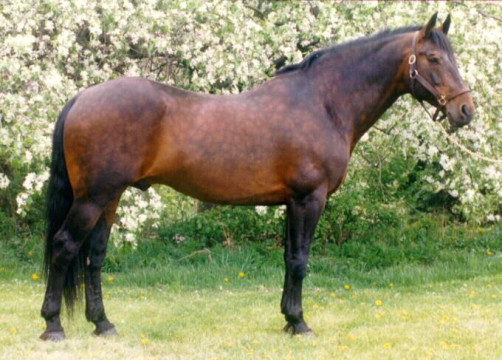 This is Rambler's Renown, a dark bay Cleveland Bay. Note the lovely golden undertones and dappling. (Owned by IdleHour Stud) |
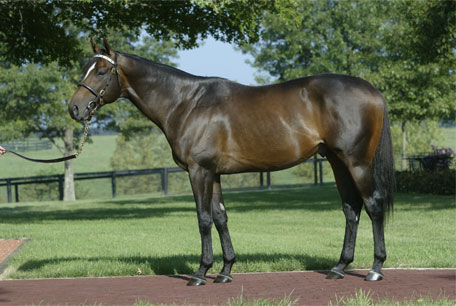 This is Empire Maker, a dark bay TB. |
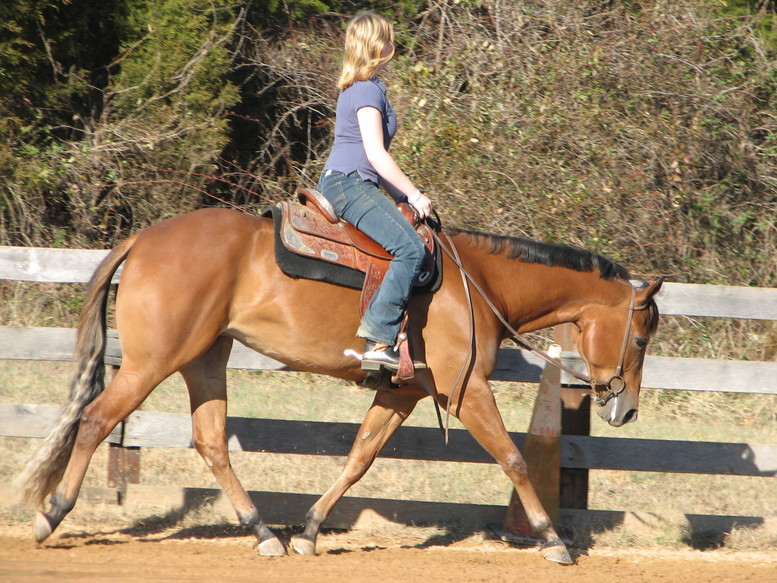 |
The horse at left is also a bay, but the black on his legs is restricted to just his joints and pasterns. This is often called a wild type bay. It is thought to be a primitive coloration as it is often found in old breeds like the Fjord and Przewalski's Horse.
|
| Brown horses are characterized by having a nearly black coat with lighter brown hairs on their muzzles, flanks, inner forearms, and inner thighs. Seattle Slew is an excellent example of this color. (Photos by Anne Eberhardt) This color is genetically the same as bay, but what determines such a dark shade is not yet known. |
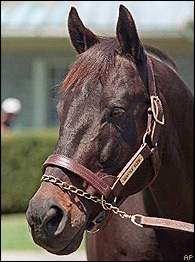 |
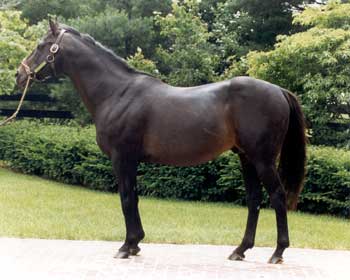 |
